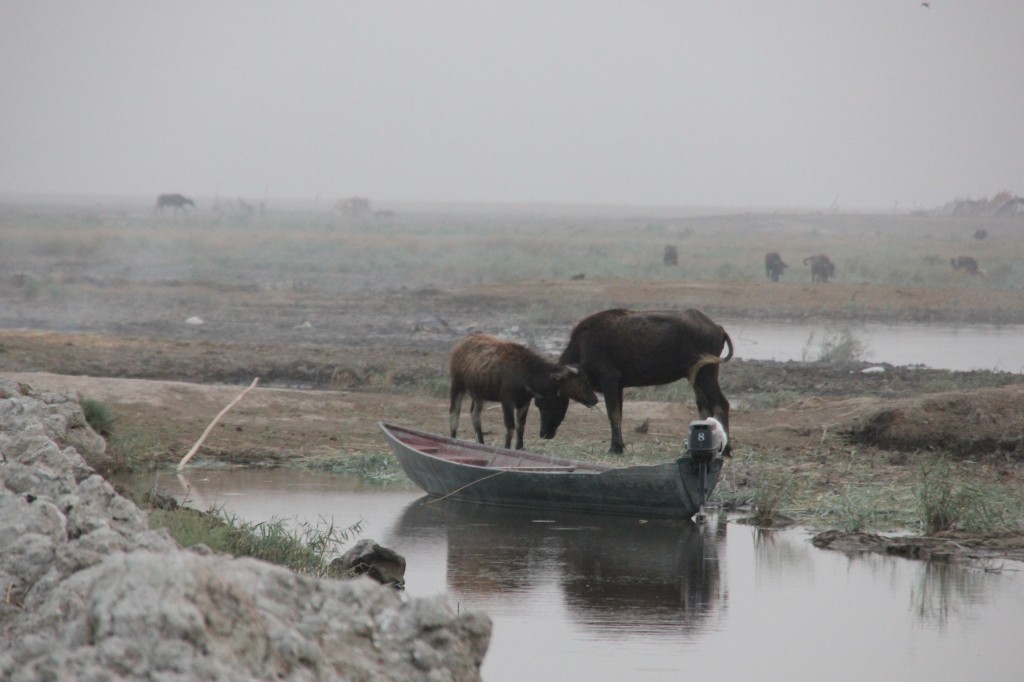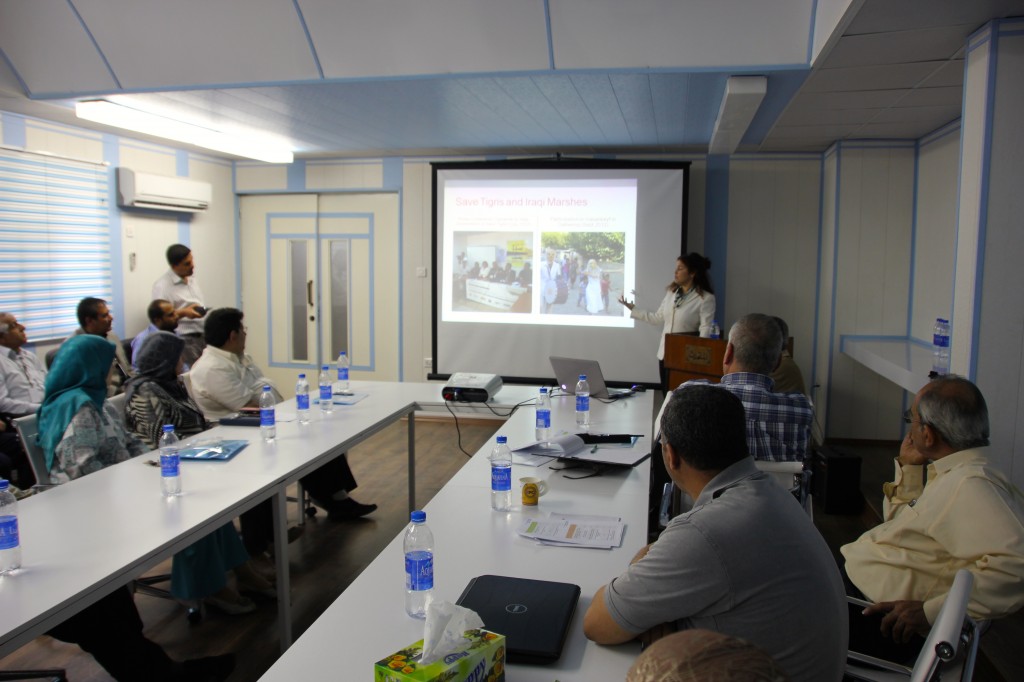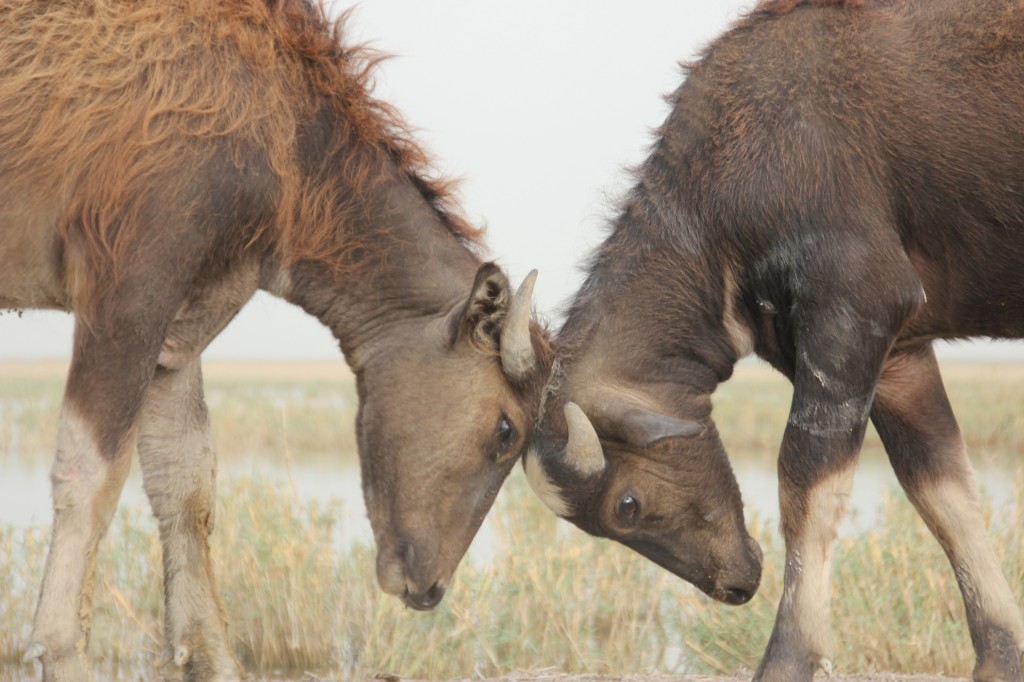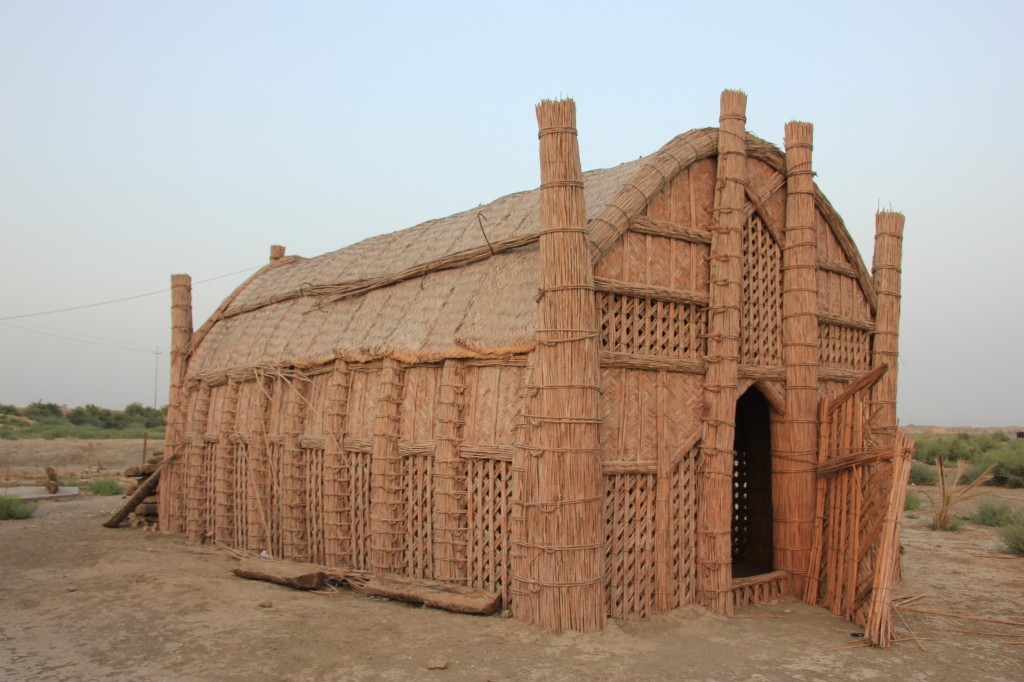Last year around this
time I was in a town called Hasankeyf located along the Tigris River in the Batman
Province in the Kurdistan part of Turkey. The Tigris Valley, with the ancient
city of Hasankeyf at its centre, is one of mankind’s most valuable cultural
assets. We drove from
Kiziltepe, passing through the ancient town of Medyat and eventually reached
Hasankeyf, driving slowly through a road under construction. As I explored this
portion of the Silk Road, I had goose-bumps and my eyes watered at my first
views of the Tigris River. All this beauty is at risk of being flooded by the
construction of the Ilisu Dam. Back when I was there, I didn’t know anything
about this project. When I recently heard about it, I asked one of my friends
who works in an environmental organization here in Iraq and she told me about
the impacts of the dam not only in Turkey, but also here in Iraq.
 |
| More than 20 ancient cultures have left their mark here, including the
Assyrians, Persians, Romans, Sassanids, Byzantines, Abbasids, and Artuqids which
are the base upon which our civilization has been built |
 The History--
The Ilisu Dam -under construction for two years now- is one of 22 dams to be
built in Turkey on the Euphrates and Tigris river basins. It is part of the Southeastern
Anatolia Project-
The History--
The Ilisu Dam -under construction for two years now- is one of 22 dams to be
built in Turkey on the Euphrates and Tigris river basins. It is part of the Southeastern
Anatolia Project- (
Turkish:
Güneydoğu Anadolu Projesi, GAP). GAP's basic aim is to eliminate regional
development disparities by raising people's income level and living standards;
and to contribute to such national development targets as social stability and
economic growth by enhancing the productive and employment generating capacity
of the rural sector.
Current activities under
GAP include sectors such as irrigation, hydraulic energy production,
agriculture, urban and rural infrastructure, forestry, education and health.
The 1200 MW and 2 billion Euro project has become one of
the most controversial projects in the international finance community.
Despite claim of the government that the Dam will
bring economical development to the area, human rights and environmental
organizations critique the way the project has been implemented. No
consultation with neighboring states affected by the dam, nor with the affected
populations is one of the major arguments against the construction of the dam. To
date approximately 60% of the GAP has been implemented, however no improvements
can be seen for the local people, rather, they have had to bear the social,
cultural and ecological costs while the industrial centres in West-Turkey and
big companies gain profit. Grassroots efforts had been successful in the past;
after several years of local and international campaigning, the Export Credit
Agencies of Germany, Austria and Switzerland, made an unprecedented step in
July 2009, by suspending the credit guarantee due to the Turkish failure to
comply with required environmental, social and cultural heritage conditions.
However, the Turkish state and the companies found new financing and continue
with the project. The credit is given by three Turkish banks (Akbank,
Garantibank and Halkbank) with a credit guarantee by the Turkish government and
other which are not presented to the public. The current consortium consists of
four Turkish companies (particularly Nurol and Cengizler) and the Austrian
company Andritz and two more small Swiss companies.
 |
| Iraq's southern Marshes were were almost completely destroyed by Saddam Hussein in a retaliation
against rebellious Marsh Arabs. New data shows remarkable improvement to
the marsh ecosystem since Hussein's fall from power thanks to
international restoration efforts, but pollution and water depletion are
still concerns.Photograph by Ghaith Abdul-Ahad/Getty Images
|
Environmental and Cultural Impacts-- In Turkey, the planned Ilisu Dam and reservoir would
completely or partially flood 199 villages and the antique city of Hasankeyf,
which are the homes of up to 78,000 people, while in Iraq 50% of the population
is dependent on the Tigris River. The Marshes in South Iraq, the largest
wetlands in the Middle East and home to the Marsh-Arabs, with their 5,000
-year-old culture will particularly suffer due to the construction of this dam. In 2009, Iraq suffered a devastating drought, partially attributable to Turkish dams.
Besides the severe cultural and ecological
impacts, this major dam also threatens the right to water, food and
self-determined socio-economic development of at least several hundred thousand
people in both Turkey and Iraq. Additionally, as it can be seen on the
Euphrates River, large upstream dams in Turkey have negative impacts on the
political stability of the region.
 |
| Upper and lower Mesopotamia has been the starting
point of the transition to sedentary agriculture and one of the first
civilizations of humanity. This region provides the exceptional chance to gain
further knowledge of humanity’s history. This important heritage should not be
destroyed for the Ilisu Project and other dams which are expected to have a lifespan
of 50 to 70 years. |
Water Politics--The
Turkish government is not interested in any dialogue with the affected local
people and their representatives and has not had any serious discussion with
the downstream states of Iraq and Syria. For Turkey, controlling the water in
the region is a tool of political domination, and they are doing it at a time
that the Iraqi and the Syrian government are very weak and cannot defend their
international right to water, in a process that has been all but participatory.
Once the dam is built, Turkey could use it as a bargaining chip to reassure
their power in a volatile, water scarce region. Undammed
river effluence flows from 100 to 300 cubic meters per second, but upon
completion of the dam project, only a flow of 60 cubic meters will be
guaranteed.
 |
| Marsh Arabs in Hasankeyf, Turkey in a solidarity action to raise awareness about the impacts of Ilisu dam in the Iraqi Marshes. May 2012. Photo by: Nature Iraq |
The government of Iraq does not show the necessary effort to
act against the destructive dams from the upstream states Turkey and Iran. To
this day, neither Hasankeyf nor the Mesopotamian Marshlands are on the list of
UNESCO World Heritage Sites. UNESCO can only grant this status at the request
of the Turkish government. Turkey refuses to take this step, despite being
called upon by the European Parliament to do so in 2004. The Marshlands of
Mesopotamia are on the Tentative List submitted by Iraq to the World Heritage
Committee in 2003, but since then no further steps have been taken. In order to
conserve the tremendous cultural and natural heritage of Mesopotamia the UNESCO
must make an effort by putting pressure on the governments of Turkey not to
build the Ilisu Dam and on Turkey and Iraq to nominate Hasankeyf and the
Mesopotamian Marshlands for their list of World Heritage Sites.
In Iraq, the Iraqi Civil Society Initiative (ICSSI) is supporting a transnational advocacy campaign, looking to bring the issue back to the table. Raising awareness of the impact of the dam construction in Iraqi water resources and joining forces within Iraq, Turkey and Iran, we have started a petition
supporting the submission of the Marshes as a UNESCO World Heritage Site. In Turkey, initiatives
like Initiative to Keep Hasankeyf Alive and organizations like Doga, are doing the same with
Hasankeyf, and shaming the local banks financing the dam and also have brought many
artists and writers to support their campaign. Internationally there have been European
efforts like Stop Ilisu Campaign, that have worked on raising awareness
internationally and helped to get international banks to divest from the
project.
UNESCO must work with both the government and civil society
to seek attention from the international community to this important issue. The
consequences are cultural, political, and environmental and need to be
addressed immediately. I’m not saying we should oppose development, but we
should look at all the possible negative impacts and work to mitigate them. To
develop a participatory, inclusive and sustainable plan in compliance with
international law, that could benefit both the economy and the people that is
impacted by the changes.
Please sign the petition:






































